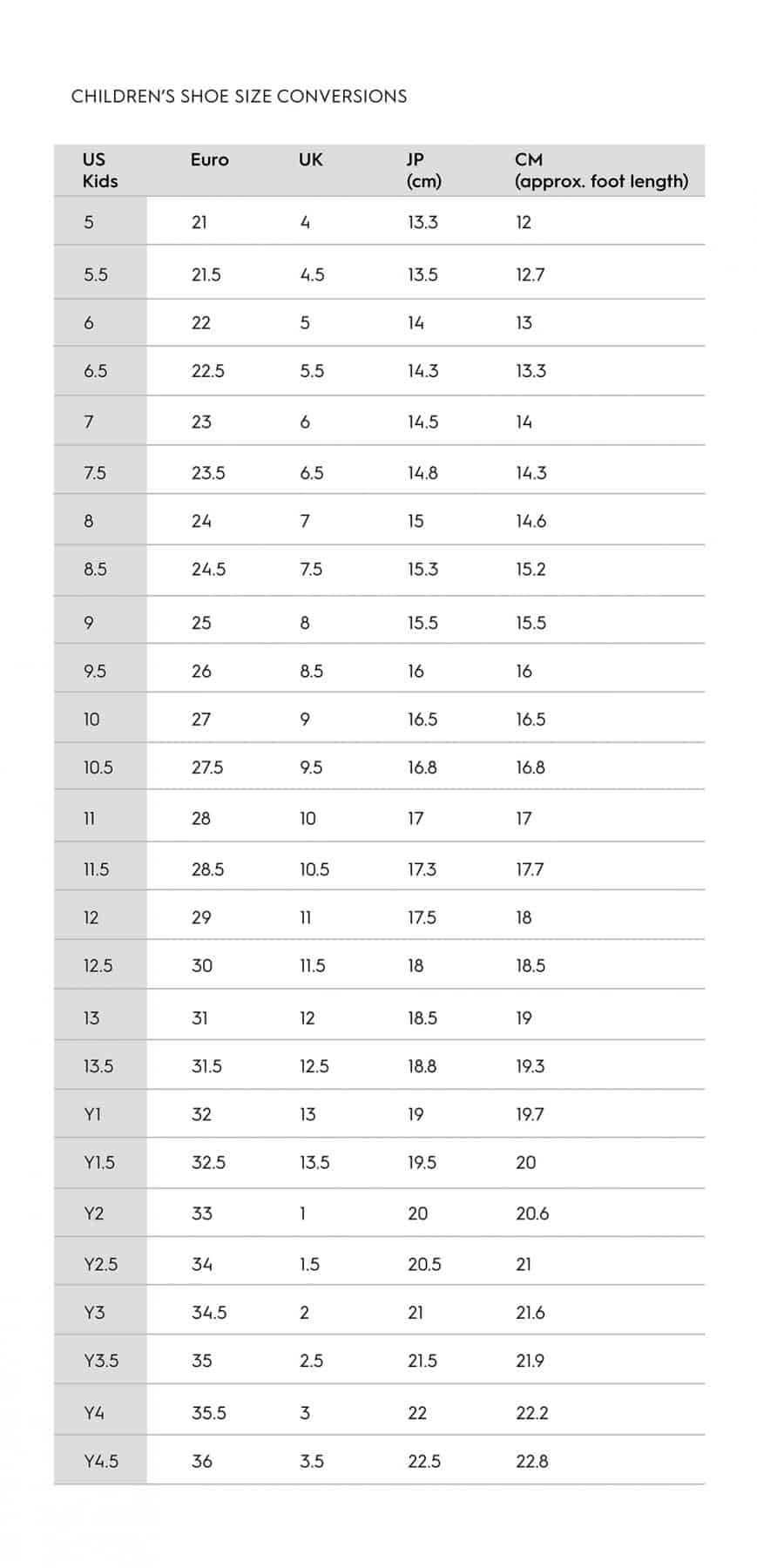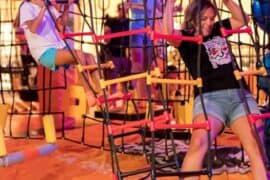Find the Perfect Fit: Australian Shoe Size Chart for Kids Explained
Welcome, parents! If you’re on a quest to find the ideal shoes for your little ones, you know how crucial the right size is for their comfort and foot development. That’s why we’ve created this joyful guide to help you navigate through the Australian shoe size charts with ease!
Understanding Kids’ Shoe Sizes in Australia
In Australia, kids’ shoe sizes are typically measured using the UK sizing system, but it’s always important to check as some brands may use US or EU sizing. This can be a tad confusing, but fret not! We’ll break it down so you can become a pro at deciphering shoe size conversions.
Measuring Your Child’s Feet
Before diving into the charts, let’s start with how to properly measure your child’s feet:
- Place a piece of paper on a flat surface against a wall.
- Have your child stand on the paper with their heel lightly touching the wall.
- Mark the longest part of their foot on the paper. Do this for both feet as one foot may be larger than the other.
- Use a ruler to measure from the edge of the paper to the mark. Use millimetres for the most accurate size.
- Find the larger measurement (since feet are rarely the same size) to determine your child’s shoe size.
Now, Let’s Look at the Australian Shoe Size Chart for Kids
Below you’ll find a comprehensive chart that correlates foot length with the corresponding Australian (UK) shoe size:
| AUS Size | Foot Length (mm) | Approx. Age | US Size | EU Size |
|---|---|---|---|---|
| 5 | 132 | 2 years | 6 | 22 |
Note: The above chart is a simplified example. Shoes can vary slightly in size depending on the brand and style, so always refer to the specific manufacturer’s size chart if it’s available.
Age as a Shoe Sizing Guide? Think Twice!
While we’ve included an approximate age range in our chart, remember that children’s feet grow at different rates. Using age as the primary indicator for shoe size can lead to ill-fitting shoes, so it’s always best to measure your child’s feet and follow the length recommendations.
As you’re already learning, finding the perfect shoe size isn’t just a walk in the park, but with our guidance, you’re on your way to mastering the skill. Keep reading for even more insightful tips on choosing the best shoes for your child and ensuring their comfort and healthy foot development.
Armed with this information, you can confidently navigate through the world of kids’ footwear, whether you’re browsing in-store or online. Our goal is to make the shoe-buying experience joyful and stress-free, ensuring that your kiddo’s feet are cozy and well-supported every step of the way. Let’s step forward into the details of selecting just the right shoe!

5 Things Parents Should Know When Preparing for Shoe Size Chart Australia
1. Sizing Systems Vary – Be Brand Aware!
Before you begin, understand that sizing systems differ among brands. Even though Australia commonly uses the UK system, international brands may showcase US, EU, or other sizing standards. When browsing for shoes, double-check the sizing guide specific to the brand to avoid any mix-ups and ensure you pick the right fit.
2. Allow Room for Growth
While it’s important to find shoes that fit well, remember that children’s feet grow quickly. Allowing a small amount of room for growth (about a thumb’s width from the toe to the end of the shoe) can help the shoes last a bit longer without compromising support and stability.
3. The Importance of Regular Measurements
Kids’ feet can sprout up seemingly overnight, so regular measurements are essential. As a rule of thumb (no pun intended!), measure your child’s feet every few months to ensure their current shoes are still fitting correctly. This reduces the risk of foot problems caused by tight shoes.
4. Understanding Width Fittings
Length isn’t the only factor when ensuring a good fit; width is equally important. Look for brands that offer various width options and consult their charts to find the width that will provide comfort for your child’s feet. Because yes, we all know that squished little toes are a big no-no!
5. Shop Later in the Day
Did you know that feet tend to swell slightly as the day goes on? For the most accurate fitting, take your child shoe shopping in the afternoon or evening when their feet are at their largest. This little timing trick can make all the difference in selecting the comfiest shoe for all-day wear.
Choosing the Right Shoes for Your Child
With a properly measured foot and a clear understanding of sizes, let’s leap into selecting the right type of shoe for your child:
- Opt for lightweight and flexible soles for young children to enable natural foot movement.
- For school-aged children, look for sturdier soles and strong support around the ankles.
- For sport-specific shoes, consider professional fitting services to cater to the specific demands of the sport.
- Quality materials like leather or breathable fabrics help keep feet dry and prevent blisters.
- Choose shoes with adjustable closures, like laces or Velcro, for a more customizable and secure fit.
Special Considerations
Special circumstances such as wide feet, flat arches, or other foot irregularities will require additional attention:
- Wide Feet: Look for brands that offer wide or extra-wide options and avoid pointed or narrow shoe styles.
- Flat Arches: Opt for shoes with good arch support or consider orthotic insoles.
- Other Irregularities: Consult a podiatrist if you have concerns about your child’s foot development or if they experience discomfort with standard shoes.
Tips for Shoe Shopping Online
In the era of digital convenience, you might be inclined to shop for your little one’s shoes online. Here are some quick tips to ensure a successful online shoe purchase:
- Always check the retailer’s return and exchange policies in case the shoes don’t fit as expected.
- Read customer reviews for insights on sizing, fit, and quality from other parents.
- Use sizing tools or printable measuring guides offered by many online shoe stores.
- Engage with customer service for personalized sizing help if you’re unsure.
Common Questions Answered
Finally, let’s address some common queries to make sure you’re fully prepared:
- Q: How often should I replace my child’s shoes? A: Generally, when the shoes start to show significant wear or are no longer comfortable, it’s time for a new pair. Also, if they’ve grown, an update is due!
- Q: Can ill-fitting shoes affect my child’s foot development? A: Yes, shoes that don’t fit properly can lead to developmental issues and discomfort, so accurate sizing is key.
- Q: Is there a difference between boys’ and girls’ shoe sizes? A: While many kids’ shoes are unisex, some brands might differentiate. Always check the specific size chart for the brand in question.
Now that you’re geared up with everything you need to know about Australian shoe size charts for kids, you’re ready to jump into action and find those perfectly fitting shoes. Happy shoe shopping!
For more great articles please see here. For more information see here
Disclaimer
The articles available via our website provide general information only and we strongly urge readers to exercise caution and conduct their own thorough research and fact-checking. The information presented should not be taken as absolute truth, and, to the maximum extent permitted by law, we will not be held liable for any inaccuracies or errors in the content. It is essential for individuals to independently verify and validate the information before making any decisions or taking any actions based on the articles.




